The Great Wall of China was built with the intellect and sacrifices of many Chinese people. Not only is it one of the Seven Wonders of the World, but the structure also contains numerous mysteries that future generations seek to uncover.
The Great Wall of China is the famous wall of China, constructed continuously from earth and stone from the 5th century BC to the 16th century to protect the nation from invasions by the Xiongnu, Mongols, and other nomadic tribes.
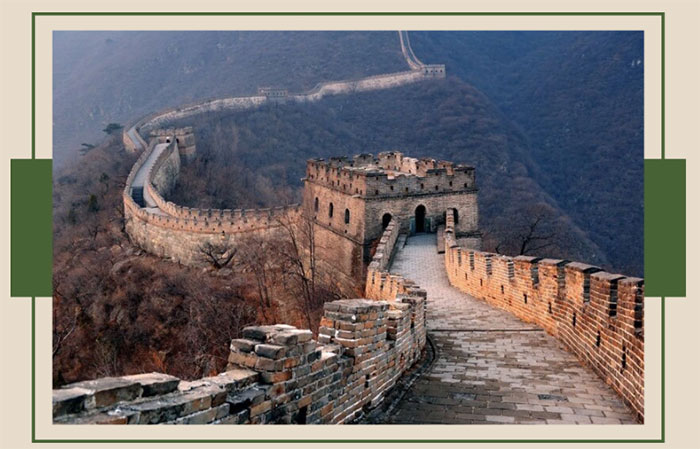
Admiring the majestic beauty of the Great Wall of China.
Some sections of the wall were built as early as the 5th century BC, with the most famous being the section ordered by China’s first emperor, Qin Shi Huang, from 220 to 200 BC. This part of the wall is located far to the north of the current Great Wall built during the Ming Dynasty.
Preliminary research published in 2009 estimated the length of the structure to be 8,850 km. According to the latest survey data, the structure is actually 21,196 km long. However, if all segments of the wall are connected, its total length could reach up to 56,000 km, with an average height of 7 meters above ground. The top of the wall averages 5-6 meters wide.
The building materials of the Great Wall are unexpected
After thousands of years of history, this great structure still “races against time.” Could it be that the structure is made of rare and complex materials to be so durable? In reality, the mortar used by the Chinese to construct the Great Wall contains a mixture of glutinous rice—a staple food for the people in the southern regions of the country.
During the restoration of the wall in the capital Xi’an, it was found that the mortar on the ancient bricks was difficult to scrape off. When tested chemically, experts discovered that this material reacted with glutinous rice. Infrared analysis also showed a molecular structure similar to that of glutinous rice. In other words, the glutinous rice mortar has contributed to the wall’s enduring “rock-solid” stability to this day.
According to experts’ research, they found that ancient Chinese builders mixed glutinous rice porridge with high-temperature calcined limestone, added water and other components to create this special mortar.
Unlike regular rice, glutinous rice, when cooked, sticks together more tightly, becoming very hard as it dries. This structure is solid and waterproof. It seems that ancient people instinctively recognized the uniqueness of this material and incorporated it into their construction, considering it a precious resource. Thus, this is one of the greatest technical innovations in ancient history.
Besides the Great Wall, some ancient towers and bridges built during the Tang and Song Dynasties in Quanzhou have withstood earthquakes of 7.5 on the Richter scale. The ancient city walls built in Nanjing and Xi’an during the Ming Dynasty have endured 600 years of history without subsiding. They share the common characteristic of using glutinous rice mortar. After the Song and Yuan Dynasties, this type of mortar became more widely used.
The smile of a beauty that led to the downfall of a dynasty
This story took place during the Western Zhou Dynasty (1122 – 711 BC), recorded in the “Records of the Grand Historian” by Sima Qian. At that time, King You of Zhou was the 12th king of the Zhou Dynasty, but also the last king of the Western Zhou. He was judged by history as a tyrant, as he became infatuated with a beauty named Bao Si, leading to the loss of his kingdom.
According to ancient records, Bao Si was an unparalleled beauty. Although King You adored her, the beauty never smiled. Devoted to this concubine, King You was determined to use every means to elicit a smile from Bao Si.
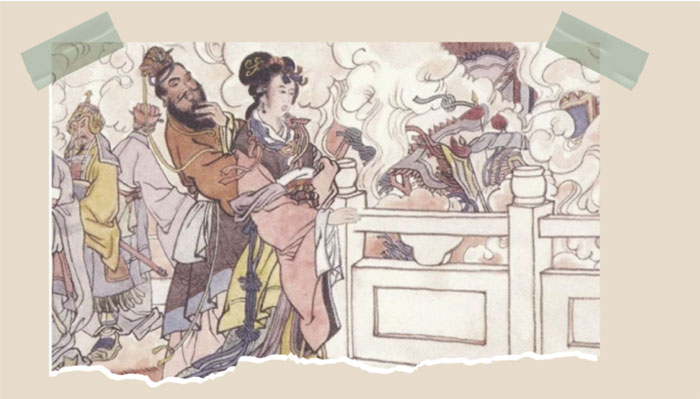
King You lost everything because of Lady Bao Si.
At that time, many oil towers called Li Mountain Towers were built around the Zhou territory to signal the approach of the Qiang invading forces, prompting the vassals to come to the rescue. Following a suggestion from a court official, King You lit a fire on the oil tower. The surrounding vassal troops rushed to assist. However, when they arrived, the soldiers were surprised to find it was a trick. Seeing the chaotic scene below, Bao Si laughed from the high tower. King You was filled with joy because of this. To please the beauty, King You ordered fires to be lit on the tower several times, causing the vassal troops to rush to assist only to leave in frustration.
Later, when the Qiang forces attacked the Li Mountain Tower, King You ordered the signal fire to be lit again, but the surrounding vassals thought it was just another joke and did not come to help. Ultimately, the rebel forces attacked the city, leading to the downfall of the Zhou Dynasty and the collapse of the Western Zhou.
99,999 bricks and one extra brick that required the wall to be rebuilt a second time
Jia Yu Guan is a pass located at the far west of the Great Wall, built in the border region adjacent to the Gobi Desert. This pass is situated at the narrowest point of the western section and was constructed at the beginning of the Ming Dynasty, around 1372. Among the remaining passes, Jia Yu Guan is the most well-preserved ancient military structure, also known as the “the strongest pass under heaven.
Due to its location in the Gobi Desert and the far western territory of ancient China, in addition to its defensive function, this pass also served as an important stop on the legendary Silk Road, connecting China with countries in Central and Western Asia.
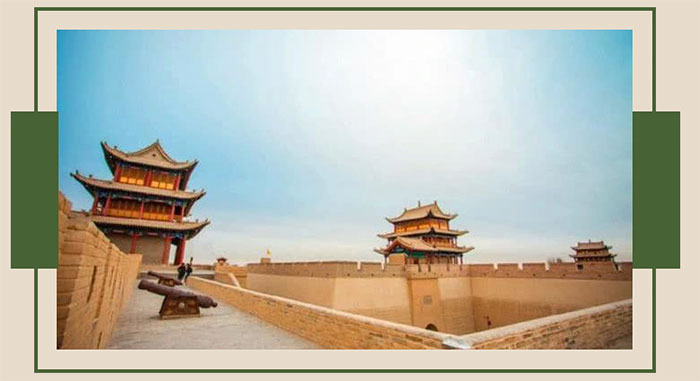
This pass has fortunately never seen war.
This location is also known as “Peace Pass,” which is exceptionally well fortified and has fortunately never experienced warfare.
From the time of its construction, this pass has been associated with a strange legend involving a man named Yin Kaiqian, who lived during the Ming Dynasty (1368 – 1644). A skilled architect and mathematician, he was tasked by his superiors to design the pass and accurately estimate the number of bricks needed to construct the wall.
Yin Kaiqian calculated that 99,999 bricks were needed to complete the project. The supervising official did not believe him and said that if he miscalculated even one brick, the soldiers would have to labor for three years.
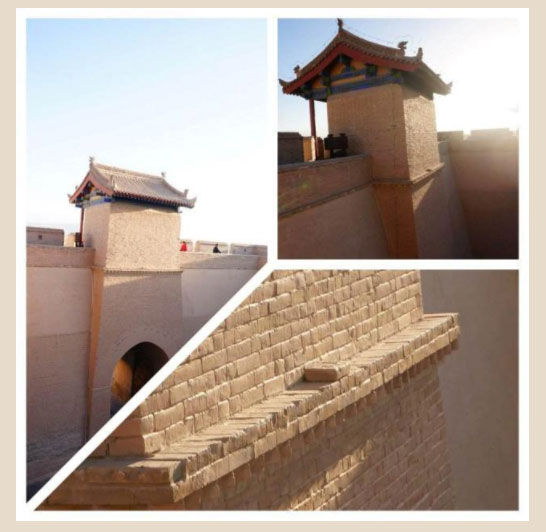
The Jia Yu Guan tower.
When Jia Yu Guan was completed, indeed, there was only one brick left over. The official was very pleased and sought to punish Yin Kaiqian as well as the bricklayers. At that time, Yin Kaiqian said that the extra brick was placed there by divine beings, and if it were moved, the entire section of the wall would collapse.
The official did not believe him and ordered the brick to be removed. Unexpectedly, the section of the wall collapsed, requiring a second rebuild. After it was rebuilt, the brick was placed back in its original position and still remains on the Jia Yu Guan tower.
A pass located precariously between two cliffs, where only swallows can fly through
Located on Yanmen Mountain in Dai County, about 20 km north of the city of Hanzhong in Shanxi Province, China, Yanmen Pass is a crucial point to cross the Great Wall.
With its treacherous terrain, nestled between two steep cliffs and abundant with swallows, this pass is called Yanmen Pass, implying that only swallows can successfully navigate this formidable pass.
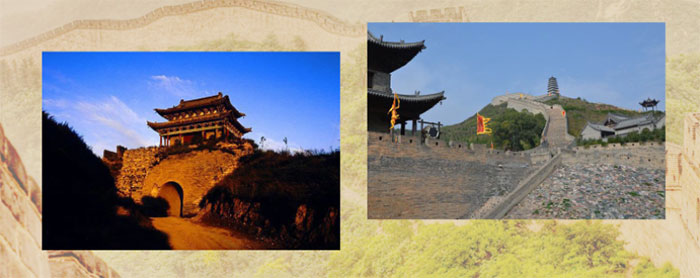
Yanmen Pass is a crucial point to cross the Great Wall.
While the first section of the wall was built by Emperor Qin Shi Huang before the Common Era, it was not until the Tang Dynasty (618 – 907) that construction on Yanmen Pass began.
Not only is this a significant military point in ancient and medieval Chinese history, but this area has also witnessed numerous large and small battles over thousands of years.
This location was constructed with bricks and paved roads. The surrounding walls stretch approximately 5 km from east to west and are equipped with many watchtowers. Historical traces remain etched on the city gate, evoking memories of a time of war and chaos.
In the past, Yanmen Pass had many ancient towers. There is one tower remaining at the eastern gate, but most were burned down during the war with Japan.
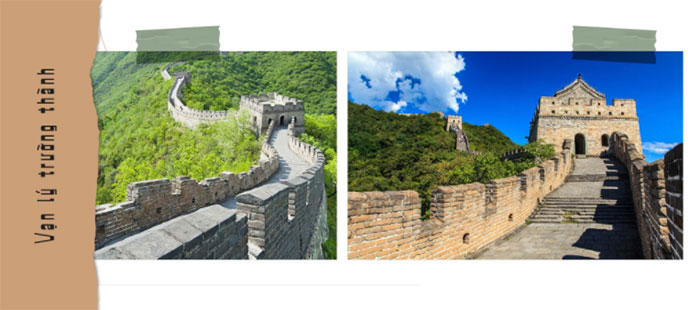
Yanmen Pass is also well-known through the tale of “Qiu Juan’s Tribute to the Hu,” or through the writings of the late author Jin Yong, becoming a legendary land featured in the novel “The Legend of the Condor Heroes.” This place is associated with the character Qiao Feng—a great hero who sacrificed his life to ensure peace for the people of the Song and Liao Dynasties….





















































